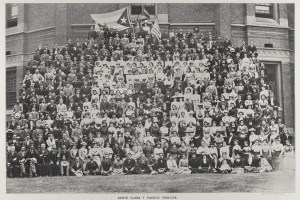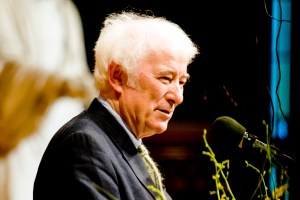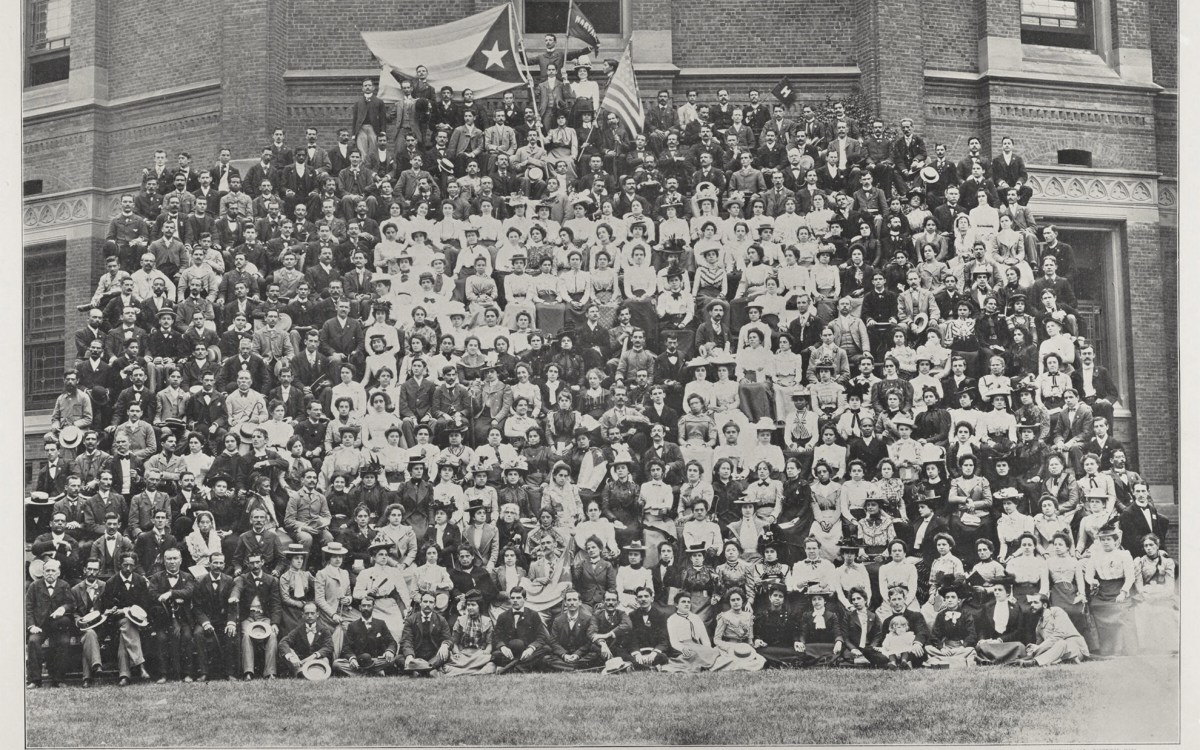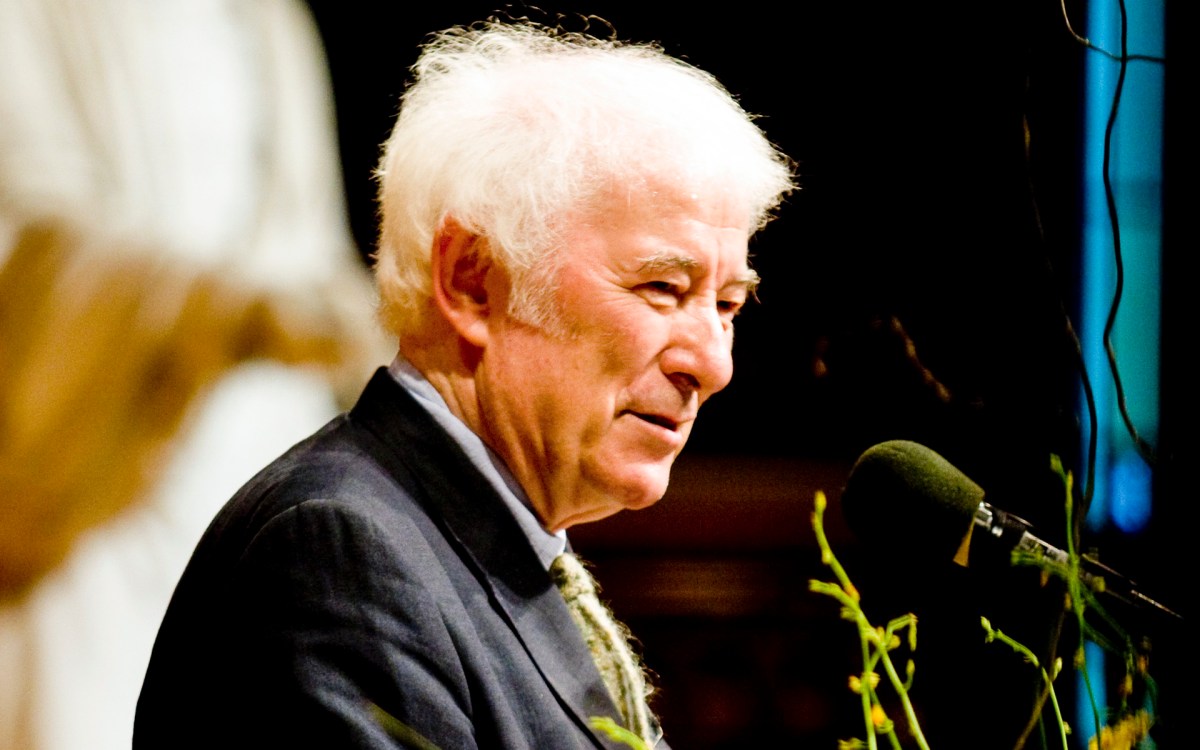Art and Big Ideas are not strange bedfellows
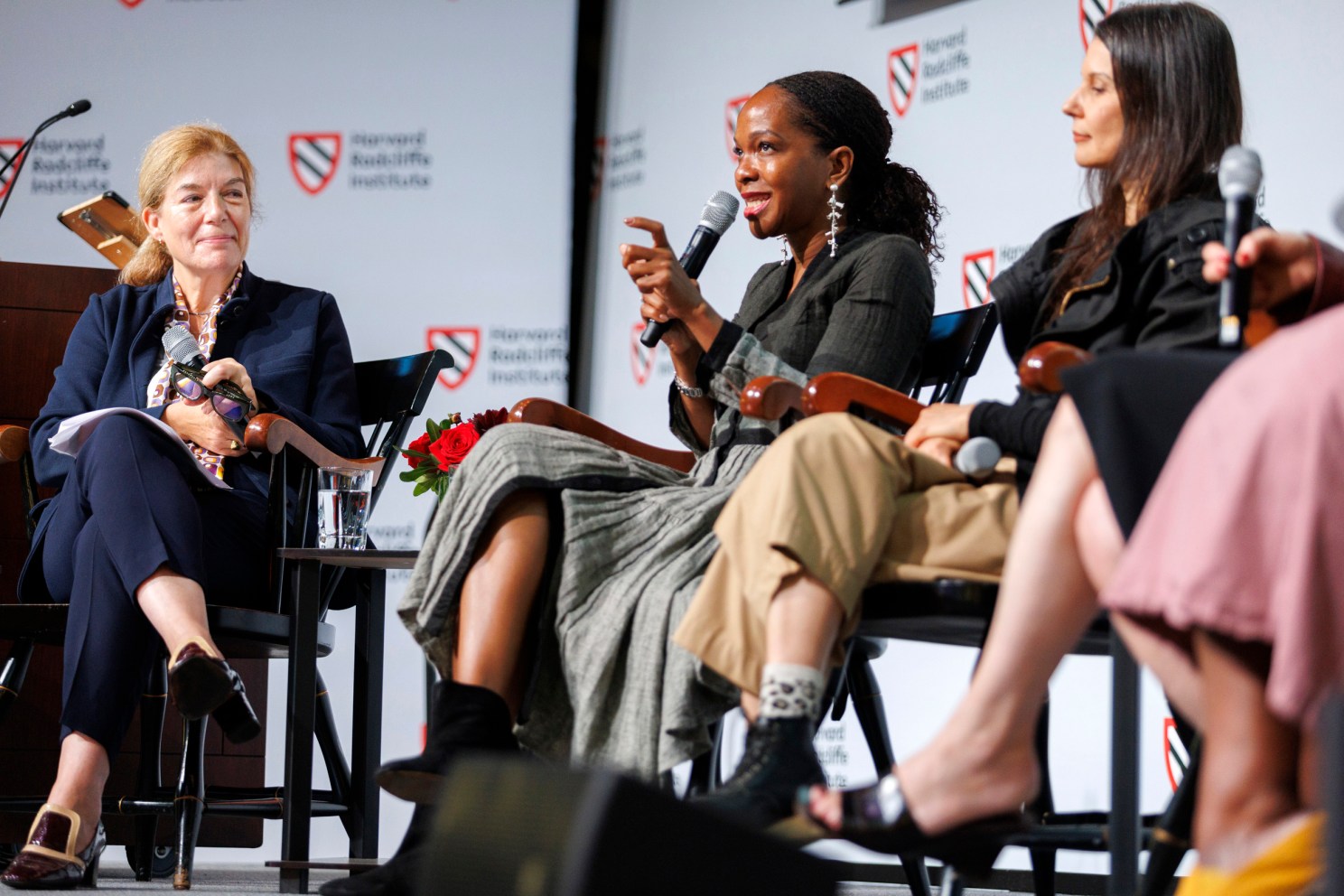
Claire Messud (from left) talks with Imani Perry, Clarissa Tossin, and Sharon Weinberger.
Stephanie Mitchell/Harvard Staff Photographer
Both spring from hard questions, benefit from interdisciplinary feedback, former Radcliffe fellows say
Some may be surprised to learn that academic and other intellectual breakthroughs and art spring from the same source.
Both begin with hard questions, and even when they lead to many answers or no answers at all, they should be pursued to advance knowledge and understanding, said artists and scholars during a panel discussion last Friday on how writing and art can stir the public imagination.
The interdisciplinary panel of writers included two novelists, a computer scientist, a journalist, a visual artist, and a scholar of race, all Radcliffe fellows. The discussion was part of the festivities marking the 25th anniversary of the Radcliffe Institute for Advanced Study and was moderated by Claire Messud, Joseph Y. Bae and Janice Lee Senior Lecturer on Fiction at the Faculty of Arts and Sciences.
In her opening remarks, Tomiko Brown-Nagin, dean of the institute and the Daniel P.S. Paul Professor of Constitutional Law at Harvard Law School, highlighted the distinctive aspect of the institute she leads.
“True to Radcliffe’s interdisciplinary mission, fellows represent a broad range of scholarly, professional, and creative fields. They come to Radcliffe from different types of institutions and at various stages of their careers,” said Brown-Nagin, also a professor of history at the Faculty of Arts and Sciences. “Pulitzer Prize recipients and National Book Award winners work alongside promising artists and scholars in the early stages of the careers. Filmmakers, visual artists, musicians, and novelists exchange ideas with historians, biologists, physicists, social scientists, physicians, lawyers and more.”
Panelists agreed that the only way to push the boundaries of what we know is by asking new questions or finding fresh ways of looking old ones.
“Every book that I write, every article begins with a question, and I try to answer it using all the bibliographies, but also the methods that are at my disposal,” said Imani Perry, Carol K. Pforzheimer Professor at Harvard Radcliffe Institute and Henry A. Morss Jr. and Elisabeth W. Morss Professor of Studies of Women, Gender and Sexuality and of African and African American Studies.
Novelist Kaitlyn Greenidge RI ’19, author of the novels “Libertie” and “We Love You, Charlie Freeman,” agreed. During her Radcliffe year, Greenidge faced many questions while working on “Libertie,” her second historical novel.
“With an artistic project, oftentimes the point is that you’re asking a question that doesn’t have an answer or that could have multiple answers at once,” she said.
For Sharon Weinberger RI ’16, national security and foreign policy editor at the Wall Street Journal, the hardest part is to come up with the initial question but also decide whether it is important enough to pursue.
“First of all, it may not be answerable,” she said. “And if you could answer it, maybe it’s not that important. And that’s where I think the interdisciplinary part is helpful. Having colleagues who say, ‘Is that an interesting question?’ ‘Would you want to know the answer?’’’
Computer scientist Francine Berman RI ’20, faculty associate at Berkman Klein Center for Internet and Society, said being surrounded by fellows from different disciplines allowed her to examine the social and environmental impacts of technology on people’s daily lives and the ways in which technology could be used to further the common good.
“Radcliffe is a great place to ask big questions,” said Berman. “For me, the big questions really have to do with how we thrive in a technological world and what strategies we can use to reduce the risk of the technologies we deal with every day, and that certainly includes AI, and to promote the benefits.”
Messud quoted the novelist Vladimir Nabokov (“A writer should have the precision of a poet and the imagination of a scientist”) in asking panelists to talk about the role of imagination in their intellectual ventures.
Clarissa Tossin RI ’18, interdisciplinary artist, said imagination is central to her art.
“Imagination, for me, is everything,” said Tossin. “I do research to do my work, but then I have to do that extra leap, which is where the imagination enters to guide me where I can go because it’s not just a scientific or scholarly inquiry.”
For writers, imagination helps create stories, characters and entire worlds, they said. And scholars said they benefit from learning storytelling techniques to make their writing more vivid and reach a broader audience.
As an interdisciplinary scholar, Perry said imagination works in both scholarship and nonfiction. Scholars might be constrained by the facts, she said, but imagination intervenes to help put all the facts together to tell a story that would resonate with readers and to envision possible futures.
“It’s the work of the imagination,” said Perry, “but the undercurrent of all the work is getting closer to a just and good world. And that absolutely requires the imagination, to get us toward something that we have not yet fully seen.”

